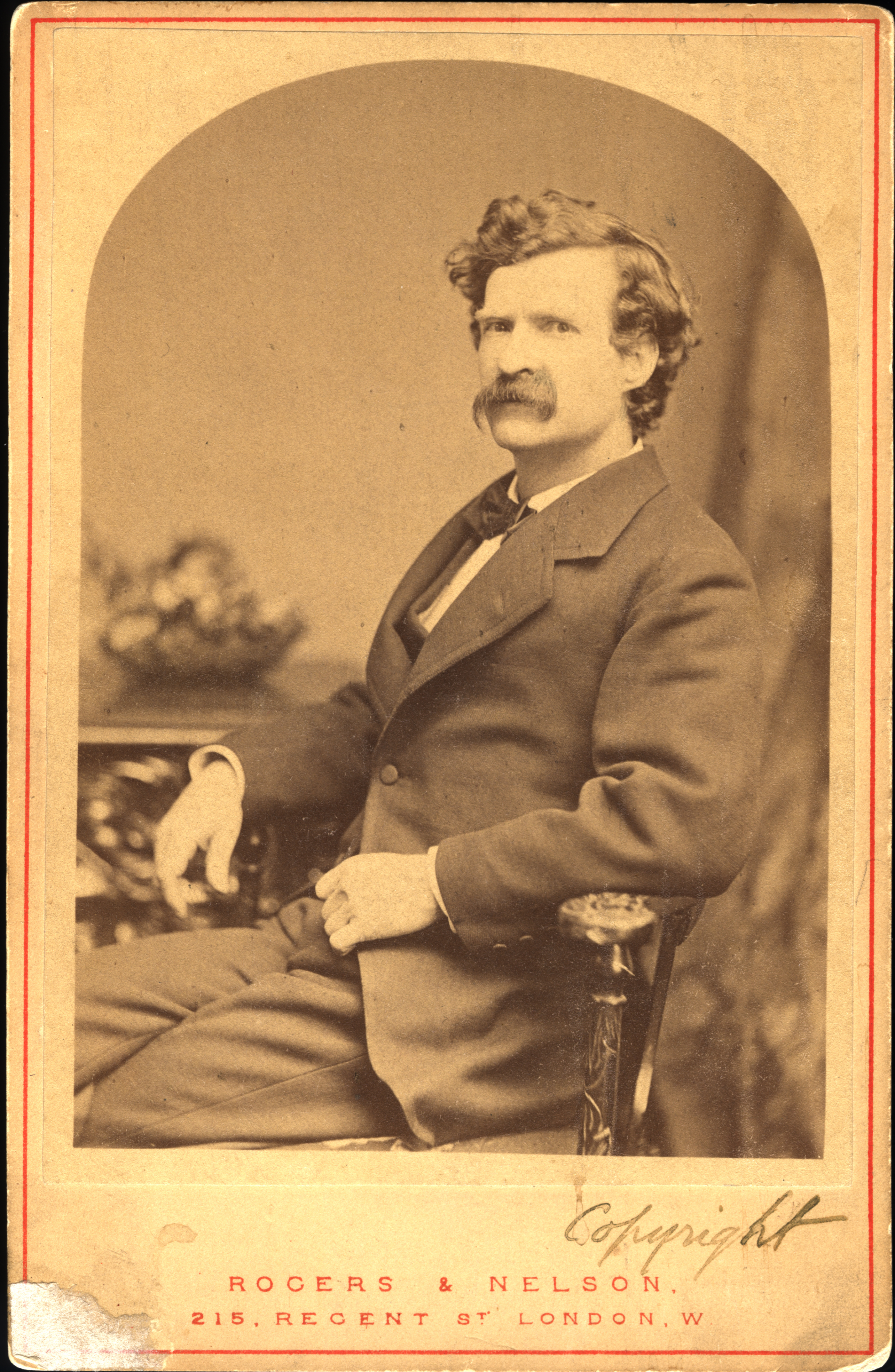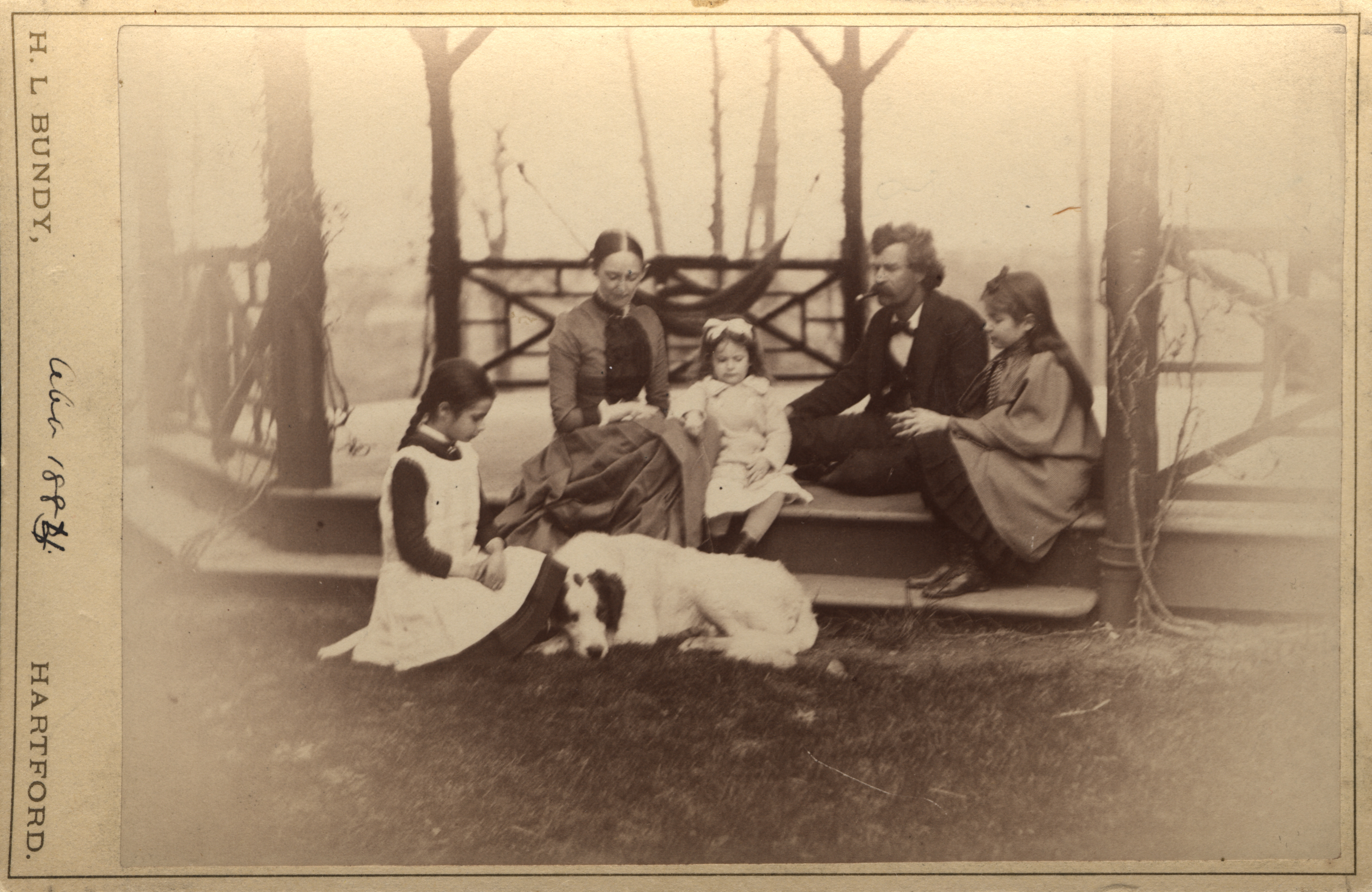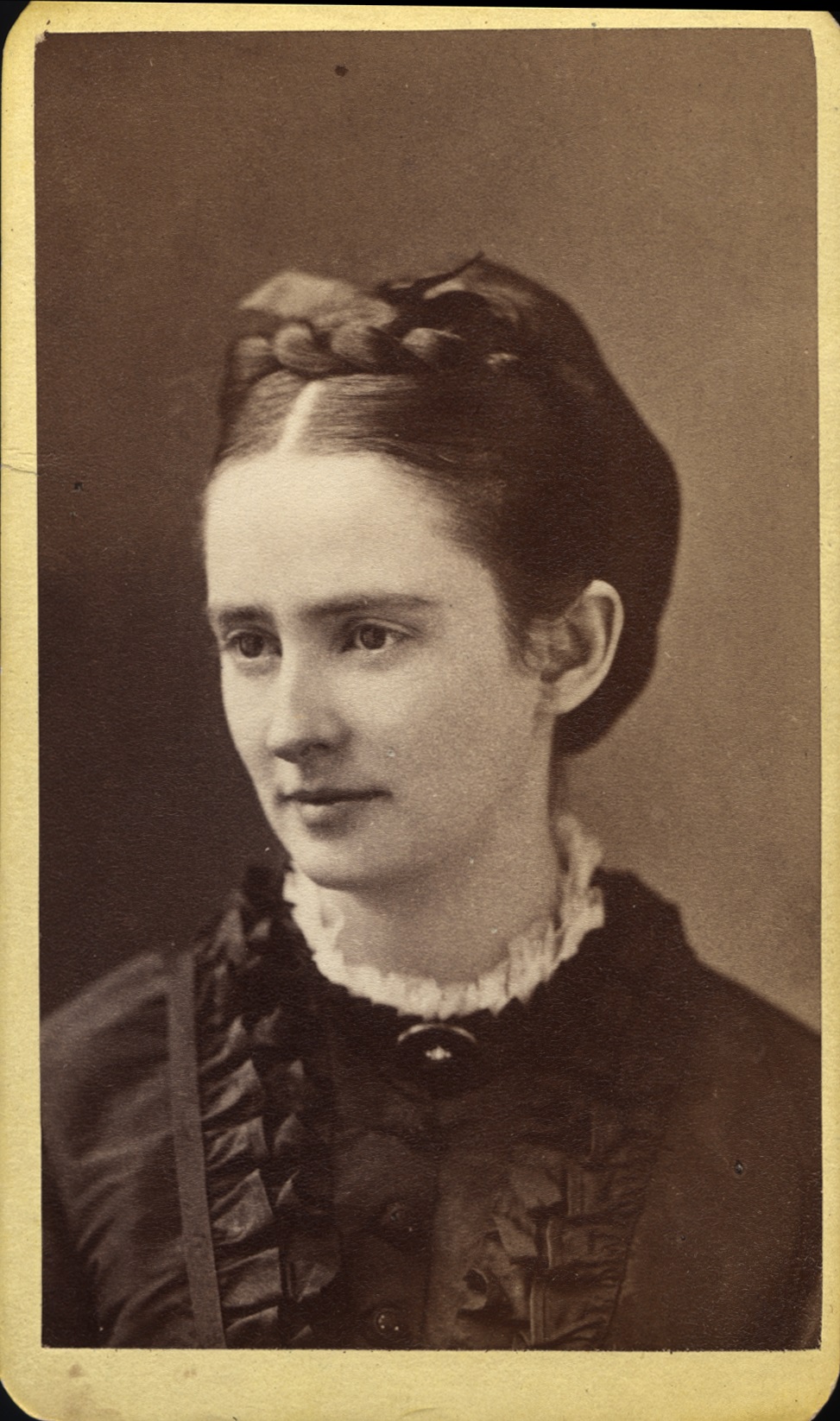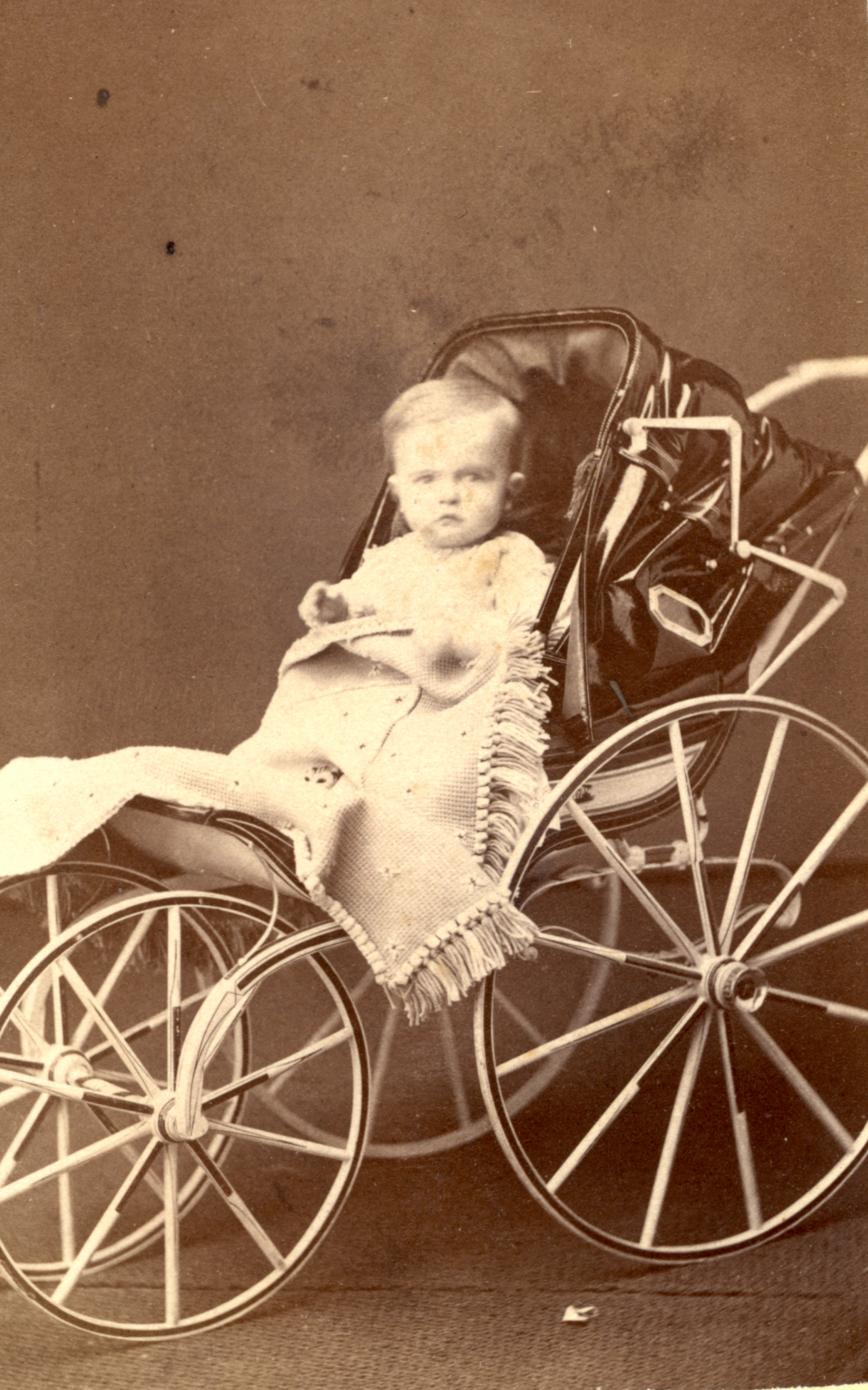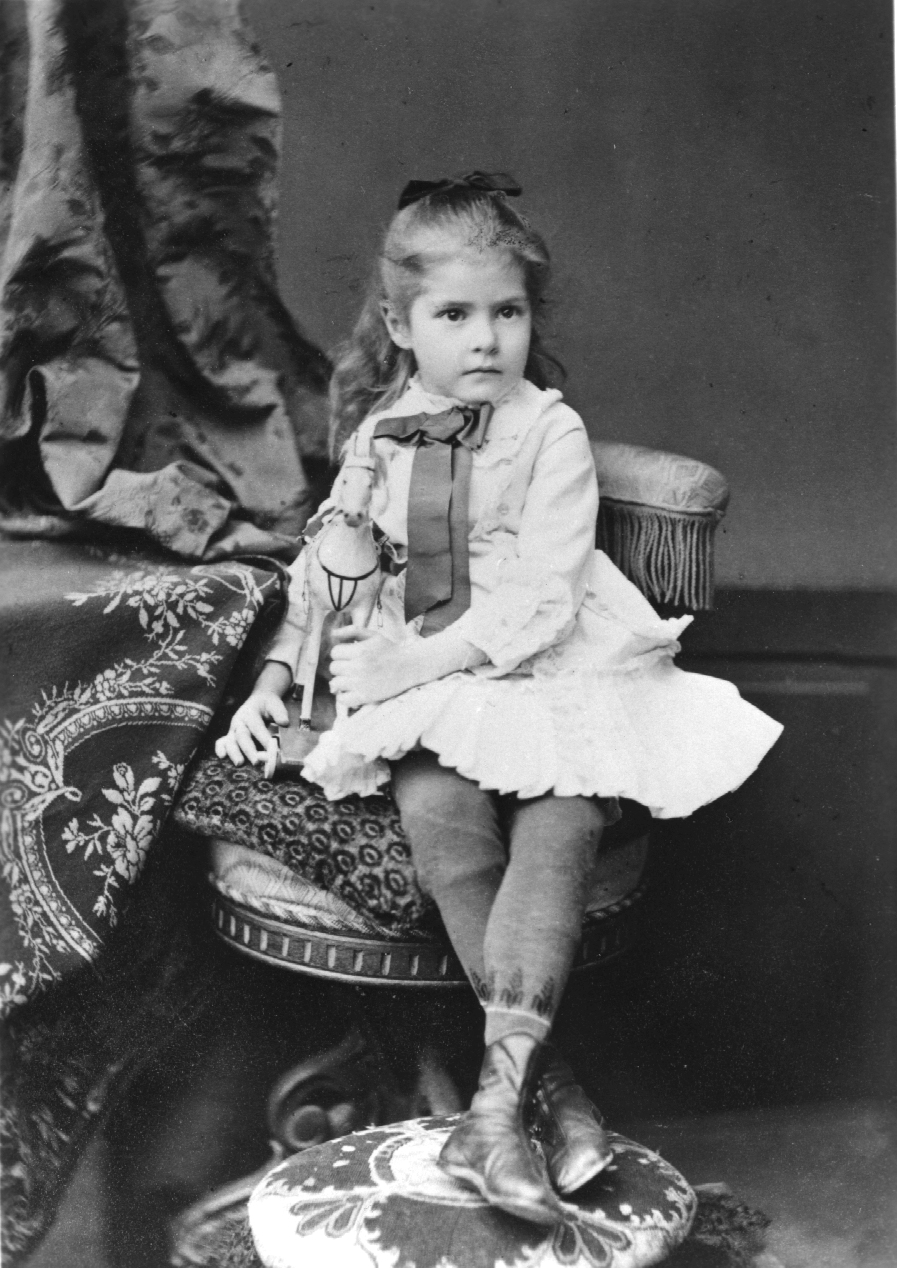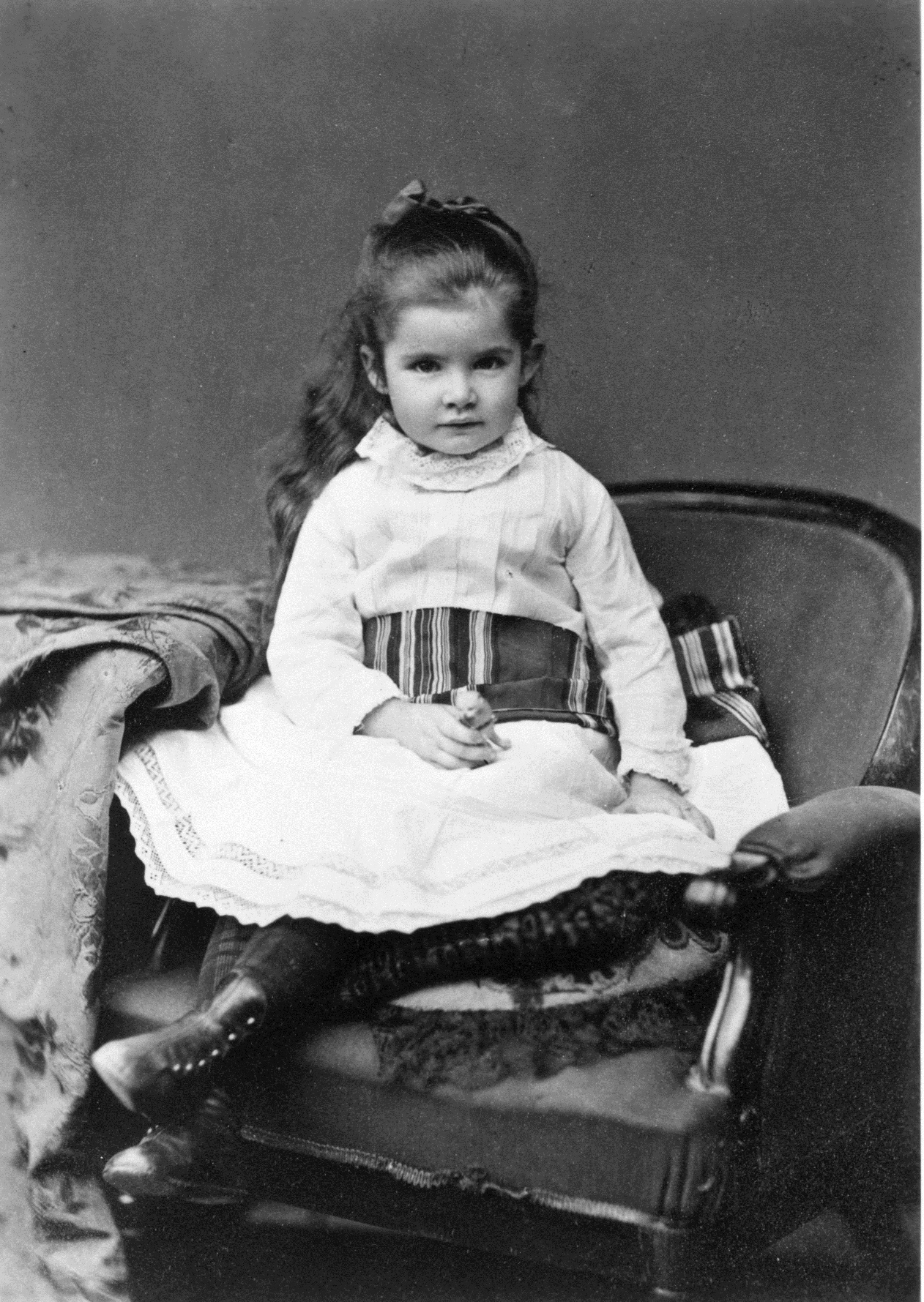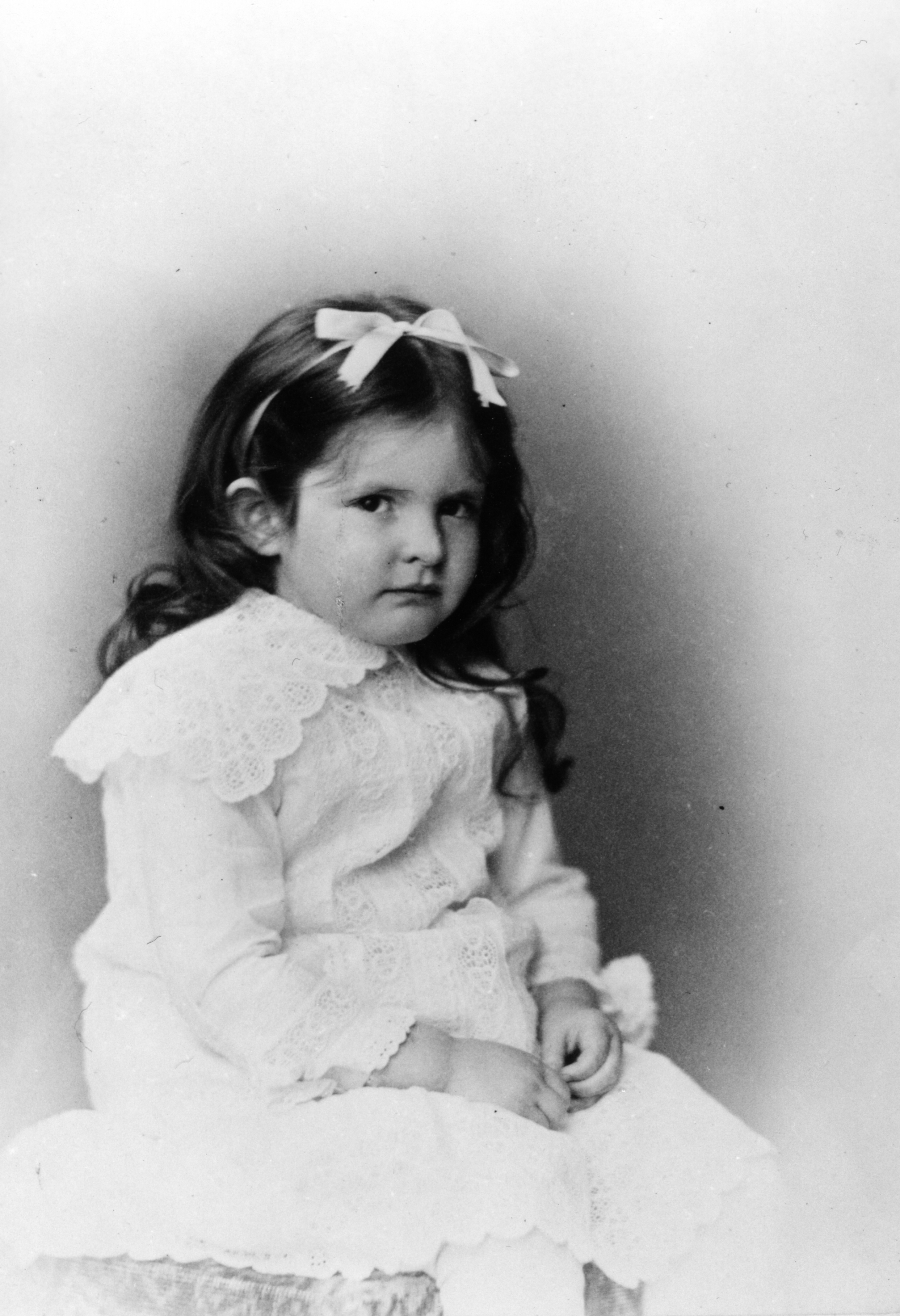Samuel Langhorne Clemens (1835-1910)
A Life Lived in a Rapidly Changing World
Samuel Clemens (1835-1910), creator of the persona of Mark Twain, lived through the rapid changes of 19th century American life; the Civil War, industrialization, urbanization, nationalism, westward expansion across indigenous lands, imperialism, as well as the social and economic changes that came with these massive shifts during America’s Gilded Age. In all of this, Clemens was a sharp observer of the people and cultures around him, albeit through the lens of a white man who grew up during legalized slavery.
However, Clemens’ understanding of the world changed over time as he moved from the South of his childhood, to the West Coast and North, as well as Europe, and as he encountered different people, raised a family, and sought to make a living as a writer and performer. He started his career without the safety net of personal family wealth, and married into a wealthy family, allowing him some respite from precarity, but never enough. His life was a constant drive for economic stability as he built and lost several fortunes.
Over time, Clemens—and thus Twain–came to be a sharp critic of the American Dream, recognizing a false promise and the power of classism and racism in America. Over his life Clemens changed his opinions about slavery, racism, imperialism and more. He questioned gender norms and roles in a time when ideas about family and childhood were shifting as new kinds of work and possible life trajectories were opening up. Clemens also came to oppose America’s growing imperialism as the nation began to intervene overseas in the Philippines, the Caribbean, and Central and South America. At the same time many of his views expanded, his opinions of the Indigenous people of America remained deeply racist and problematic. In many ways, perhaps in ways that Clemens himself could not see, the voice of Mark Twain provided great insight into the contradictions and characteristics of America in the middle of a great transformation.
Samuel's Childhood
Samuel Clemens was born on November 30, 1835 in Florida, Missouri, the sixth of seven children. At age 4, Samuel and his family moved to the small frontier town of Hannibal, Missouri, on the banks of the Mississippi River. Missouri at the time, was a fairly new state (it had gained statehood in 1821) on the country’s western border, with legalized slavery; Samuel’s father owned one enslaved person, and his uncle owned several. In fact, it was on his uncle’s farm that Samuel spent many boyhood summers playing in the enslaved people’s quarters, listening to tall tales and the spirituals that he would enjoy throughout his life.
In 1847, when Samuel was 11, his father died, changing the fortunes of the family drastically. Shortly thereafter he left school to work as a printer’s apprentice for a local newspaper. His job was to arrange the type for each of the newspaper’s stories, allowing Samuel to read the news of the world while completing his work.
Samuel’s Young Adult Life
Born before the Civil War, with no family wealth to support him, and keenly aware that America and daily life were changing all around him, Samuel Clemens's whole life must have seemed like one long hustle. Samuel bounced around from the South of his childhood to the East Coast and the West, trying out a variety of jobs.
Looking for opportunity, at 18, Samuel headed east to New York City and Philadelphia, where he worked on several different newspapers and found some success at writing articles. By 1857‚ he had returned home to embark on a new career as a riverboat pilot on the Mississippi River. With the outbreak of the Civil War in 1861, however, all traffic along the river came to a halt, as did Samuel’s pilot career. Inspired by the times, Samuel joined up with a volunteer Confederate unit called the Marion Rangers , but he quit after just two weeks.
In search of a new career, Samuel headed west in July 1861, at the invitation of his brother, Orion, who had just been appointed secretary of the Nevada Territory. Lured by the hope of striking it rich in Nevada’s silver rush, Samuel traveled across the frontier from Missouri to Nevada by stagecoach. Along the journey Samuel encountered Indigenous peoples for the first time, along with a variety of unique characters, mishaps, and disappointments. These events would find a way into his short stories and books‚ particularly _Roughing It_ (1872).
After failing as a silver prospector‚ Samuel began writing for the _Territorial Enterprise_‚ a Virginia City‚ Nevada newspaper where he used‚ for the first time‚ his pen name‚ Mark Twain. Seeking change yet again, by 1864 Samuel headed for San Francisco where he continued to write for local papers.In 1865 Samuel’s first “big break” came with the publication of his short story “Jim Smiley and His Jumping Frog ” in papers across the country. A year later Samuel was hired by the Sacramento Union to visit and report on the Sandwich Islands (now Hawaii). These writings were popular with the paper’s audiences. Fresh off these successes Samuel began to realize that he could make a living from his writing, but that more was needed to reach and sustain financial stability, so upon his return to California, he embarked upon his first lecture tour, which established him as a successful stage performer.
Traveling with the Innocents
On the strength of some newspaper reporting he had done about a trip to Hawaii, and his first published story, “The Celebrated Jumping Frog of Calaveras County,” Samuel Clemens was hired by the _Alta California_ newspaper to continue writing about his travels. Samuel was sent to New York to board the steamship _Quaker City_, and accompany a group of 73 fellow tourists on the nation’s first true ocean cruise for five months in 1867– which inadvertently led Samuel to his future wife and family.
The route took the ship from New York through the Mediterranean to what was then called the Holy Land, now encompassing Israel, Syria, Jordan and Lebanon, with side trips by rail. Clemens sent dispatches home to the San Francisco newspaper _Alta California_ full of elegant descriptions of architecture and landscape – and humorous swipes at European sophistication and American innocence. His vivid descriptions and tongue-in-cheek observations, met with such audience approval that they were later reworked into his first book, _The Innocents Abroad_ (1873) which launched Samuel’s literary career.
One of his fellow travelers was a 18-year-old young man from Elmira, New York, named Charles Langdon whose parents had sent him on the trip to improve his education. One day, as the _Quaker City_ was anchored in the Bay of Smyrna, Langdon showed Clemens a miniature portrait of his sister Olivia, and (so the story goes) the author fell in love with her on sight.
Samuel Starts a Family and Moves to Hartford
After returning to the United States, Samuel courted Olivia in Elmira and New York City – their first date was to hear Charles Dickens read in Steinway Hall in New York City, and her parents came along. Rebuffed at first, and after courting for two years, Samuel finally convinced Olivia to marry on February 2, 1870 in her parents home in Elmira, New York. Their marriage was very much a partnership as well as a love affair. Samuel considered Olivia an important part of his writing, and leff pages for her to read and review, valuing her suggestions and edits. He said of Olivia: “I take as much pride in her brains as I do in her beauty.”
They settled in a house gifted to them by Olivia’s father in Buffalo, New York, near her wealthy and connected family. Samuel become a partner‚ editor, and writer for the daily newspaper the _Buffalo Express_. While they were living in Buffalo, their first child, Langdon Clemens, was born.
In 1871 Samuel moved his family to Hartford, Connecticut, a city he had come to know while visiting his publisher there and where he had made friends. Olivia also had family connections to the city. Samuel was hoping to build his burgeoning career as Mark Twain by moving closer to his publisher. For the first few years the Clemenses rented a house in the heart of Nook Farm, a residential area that was home to numerous writers, publishers, and other prominent figures. In 1872 Samuel’s recollections and tall tales from his frontier adventures were published in his book _Roughing It_. That same year the Clemenses’ first daughter Susy was born; then tragically their son, Langdon, died at age 1.5 from diphtheria.
In 1873 Samuel’s focus turned toward social criticism. He and Hartford Courant publisher Charles Dudley Warner co-wrote _The Gilded Age_‚ a novel that attacked political corruption‚ big business, and the American obsession with getting rich that seemed to dominate the era. Ironically, a year after its publication, Clemenses’ elaborate 25-room house on Farmington Avenue, which had cost the then-huge sum of $40‚000-$45‚000‚ was completed. Samuel and Olivia would also spend a great deal of time and money (a good portion coming from Olivia’s mother) over the next seven years furnishing and renovating the house to meet high standards.
Clemens Writes His Most Famous Books While Living in Hartford
For the next 17 years (1874-1891), Samuel‚ Olivia, and their three daughters (Clara followed first daughter Susy in 1874 and Jean in 1880) lived in the Hartford home. At this time there was no real roadmap to create a sustainable career as a writer, but Samuel recognized early on that to sell his books he needed to build an audience by reaching out to as many readers as he could. So, while he and his family lived in Hartford for 17 years, Samuel rarely stayed put.
Instead, he left Hartford by train, ship, or carriage, and traveled the world for weeks or even months at a time, popularizing his work and his name while absorbing and speaking with the voices of the people that he encountered across the country. During those years Samuel completed some of his most famous books, often finding a summer refuge for uninterrupted work at his sister-in-law’s farm in Elmira, New York.
Novels such as _The Adventures of Tom Sawyer_ (1876) and _Life on the Mississippi_ (1883) captured both his Missouri memories and depictions of the American scene. Yet his social commentary continued. _The Prince and the Pauper_ (1881) explored class relations, as does _A Connecticut Yankee in King Arthur’s Court_ (1889), which‚ going a step further‚ criticized oppression in general while examining the period’s explosion of new technologies. And‚ in perhaps his most famous work‚ _Adventures of Huckleberry Finn_ (1884)‚ Clemens‚ by the way he cast a critical eye on the institution of slavery‚ railed against the failures of post-Civil War treatment of African Americans in his own time.
_Adventures of Huckleberry Finn_ was also the first book published by Samuel’s own publishing company‚ The Charles L. Webster Company, named for Clemens’ niece’s husband. Writing never quite paid the bills for the life that Samuel and Olivia wished to live, and in an attempt to gain control over publication as well as to make substantial profits, Samuel created the company in 1884. A year later he contracted with Ulysses S. Grant to publish Grant’s memoirs; the two-volume set provided large royalties for Grant’s widow and was a financial success for the publisher as well.
Samuel’s Financial Ruin and Subsequent Travels
Although Samuel enjoyed some financial success during his Hartford years, he continually made bad investments in new inventions and the high costs of entertaining at and running their Hartford home eventually brought him to bankruptcy. In an effort to economize and pay back his debts, Samuel and Olivia moved their family to Europe in 1891 where the family rented a home and scaled back their socializing and living expenses. When his publishing company failed in 1894, Samuel was forced to set out on a worldwide lecture tour to earn money.
In 1896 tragedy struck when Samuel’s oldest daughter, Susy Clemens, at age 24, died from meningitis while on a visit to the Hartford home. Unable to bear being in the place of her death, the Clemenses never returned to Hartford to live.
From 1891 until 1900‚ Samuel and his family traveled throughout the world. During those years Samuel witnessed the increasing exploitation of weaker governments by European powers‚ which he described in his book _Following the Equator_ (1897). The Boer War in South Africa and the Boxer Rebellion in China fueled his growing anger toward imperialistic countries and their actions. With the Spanish-American and Philippine wars in 1898‚ Samuel’s wrath was redirected toward the American government. When he returned to the United States in 1900, his finances restored, Samuel readily declared himself an anti-imperialist and, from 1901 until his death, served as the vice president of the Anti-Imperialist League.
Clemens’s Darkest Times and Late Life
In these later years, Samuel's writings turned dark. His works began to focus on human greed and cruelty and questioned the humanity of the human race. His public speeches followed suit and included a harshly sarcastic public introduction of Winston Churchill in 1900. Even though Samuel’s lecture tour had managed to get him out of debt, his anti-government writings and speeches threatened his livelihood once again. As Samuel was labeled by some as a traitor, several of his works were never published during his lifetime, either because magazines would not accept them or because of his own personal fear that his marketable reputation would be ruined.
In 1903, after living in New York City for three years, Olivia became ill, and Samuel and his wife returned to Italy, where she died a year later. After her death, Samuel lived in New York until 1908, when he moved into his last house, “Stormfield,” in Redding, Connecticut. In 1909 his middle daughter Clara was married. In the same year Jean, the youngest daughter, died from an epileptic seizure. Four months later, on April 21, 1910, Samuel Clemens died at age 74.

